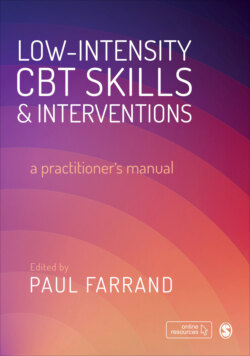Читать книгу Low-intensity CBT Skills and Interventions - Группа авторов - Страница 158
На сайте Литреса книга снята с продажи.
Alcohol and Drug Use
ОглавлениеThe NICE guideline for alcohol use disorders (NICE, 2011c) and the IAPT Drug and Alcohol Positive Practice Guide (National Treatment Agency for Substance Misuse, 2012) recommend routine assessment of drugs and alcohol with practitioners who are competent to identify harmful drinking. As problematic drinking may not be associated with poorer treatment outcomes such as non-recovery or drop-out (Buckman et al., 2018), it should not be treated as an automatic exclusion criterion from working at Step 2 or Step 3 of a stepped care model (National Treatment Agency for Substance Misuse, 2012). Clinical decision-making during assessment should determine patient ability to attend and engage with LICBT treatment alongside the extent of the impact alcohol/drug use is having on their general level of functioning. Appropriate screening tools with cut-offs such as the AUDIT-C (Bush et al., 1998) should be used as part of decision-making to offer treatment to patients using drugs and/or alcohol. In some cases, alcohol and drug use may require the suitability of Step 2 and Step 3 treatment to be reconsidered.
